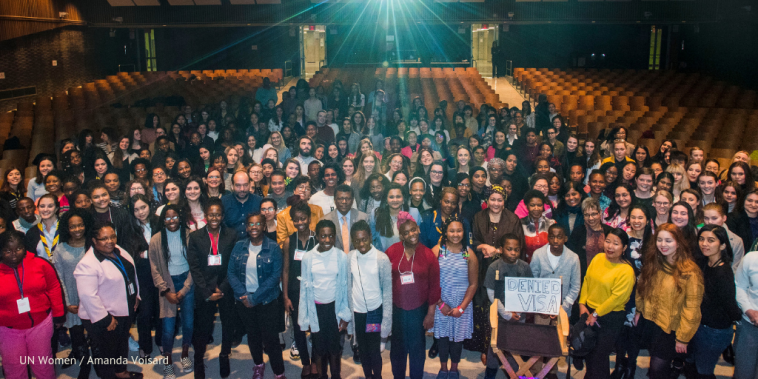Equal access to public services

Ensuring equal access to public services, and ensuring those services respond to the specific needs of women’s health, is fundamental to reducing poverty, inequality, and advancing the rights of women and girls.
Unfortunately, millions of women and girls around the world still lack the fundamental services they need to ‘survive, thrive and transform,’ as set out in the Global Strategy for Women’s, Children’s and Adolescent’s Health.
FIGO members are on the frontline of women’s health in 132 countries: here we review some of the barriers to accessing public services that they regularly identify, and which we must tackle to ensure all women achieve the highest standards of health and wellbeing.
Barriers to access: rural populations
Women in rural areas experience poorer health outcomes than their urban counterparts. ACOG (the American College of Obstetricians and Gynecologists) observes that women in nonmetropolitan areas across the US are less likely to receive reproductive health services, and have a higher rate of pregnancy-related death than city-dwellers.
In South Africa, a study of barriers to obstetric care at a tertiary hospital found that 66 percent of women classified as a ‘maternal near-miss’ encountered some form of delay before reaching the appropriate level of care.
As Dr Priya Soma-Pillay, Honourary Secretary of SASOG explains,
“Most of the public health care resources are utilised in urban areas, but a large percentage of women are based in rural areas. Access barriers include vast distances, no public transport, and high travel costs.”
Barriers to access: poverty
Poverty leads to unequal access to education, limited opportunities for employment and lower wages, all of which become barriers to quality healthcare access.
In many cases, women simply cannot afford to access the healthcare they need.
99 percent of all maternal deaths occur in low-resource settings, and below the global picture is an even more complex imbalance at country level. Use of antenatal and professional delivery care reaches 80 percent of the population in the richest level of almost every country according to the World Health Organization, and a significantly lower number of poor women.
Poverty further compromises the quality of healthcare available to a woman once she arrives at a facility. In low-resource settings, issues of hospital overcrowding, healthcare worker shortage and risk of sexual assault can lead to delayed care.
As a member of the Quality of Care Network, FIGO works with a broad partnership to ensure that every pregnant woman, newborn and child receives good quality care with equity and dignity.
Barriers to access: cultural divisions
Contraception, gender-based violence, gynecologic cancers: women face healthcare challenges directly linked to their sexual and reproductive health that men do not, and disproportionate healthcare inequality.
However in many countries, sexual and reproductive health services focus on married women. Unmarried women and girls can miss out on the care they need, or fail to seek it because of fears of stigma linked to community standing and involvement of family members in the healthcare decision-making process.
To meet goals established in the 2030 Agenda for Sustainable Development, all women and girls need access to comprehensive maternal, newborn, sexual and reproductive health services. This must include family planning, essential medicines, skilled health care providers, and rights-based maternity care.
A study on access to primary care and public health published in The Lancet found that interventions tackling health inequalities need to take patients’ own engagement patterns into account.
FIGO’s PPIUD Project, which works through our national OBGYN member societies in six countries to institutionalise the provision of postpartum IUD services into routine maternity care, is a strong example of this.
Barriers to access: lack of skilled attendance at delivery
Although the health and social sector is expected to generate some 40 million new health worker jobs by 2030, this is not enough - not by a long stretch.
WHO predicts a deficit of up to 18 million health workers by then, and lack of skilled attendance for women during childbirth is a significant factor in maternal mortality and morbidity outcomes.
Said Gillian Slinger, Senior Project Manager for FIGO’s Fistula Surgery Training Initiative,
“The global shortfall in health care providers is not an abstract risk – it is immediate and life-threatening. Due to a shortage of trained, skilled fistula surgeons, only one woman in 50 has access to fistula treatment. We see these staggering inequalities in access and quality of care across so many critical areas of women’s health, from sexual health and reproductive rights to cervical cancer screening and treatment.”
This burden of under-coverage is concentrated in rural areas and especially among the poor: three times the current number of professionals are needed to achieve universal professional delivery attendance and break the vicious cycle of inequality in healthcare access.
Tackling inequality going forward
Women and men have different health-care needs, but an equal right to live healthily.
Long-term strategies can deliver large-scale progress, for example in China when the government committed to ensuring access to delivery care in health facilities, through a National Plan of Action for Women that included ambitious reform of the professional education system to expand the enrolment of health professionals and tackle shortages.
As the global voice for women’s health, FIGO advocates for improved availability, accessibility and affordability of healthcare services that respond to the specific needs of women to ensure a lifetime of health and wellbeing.